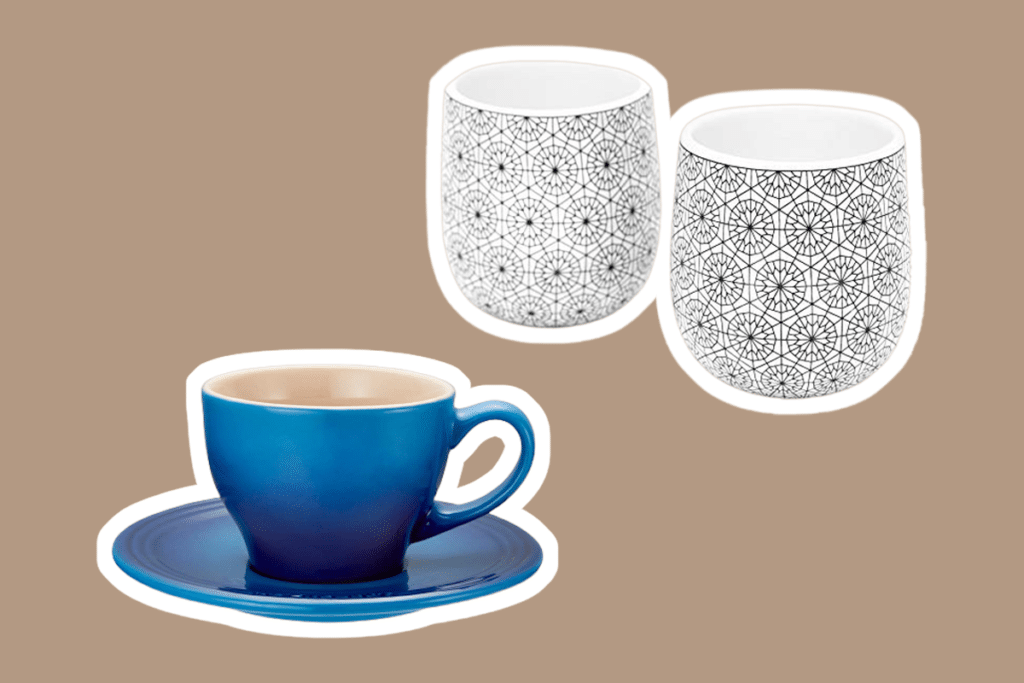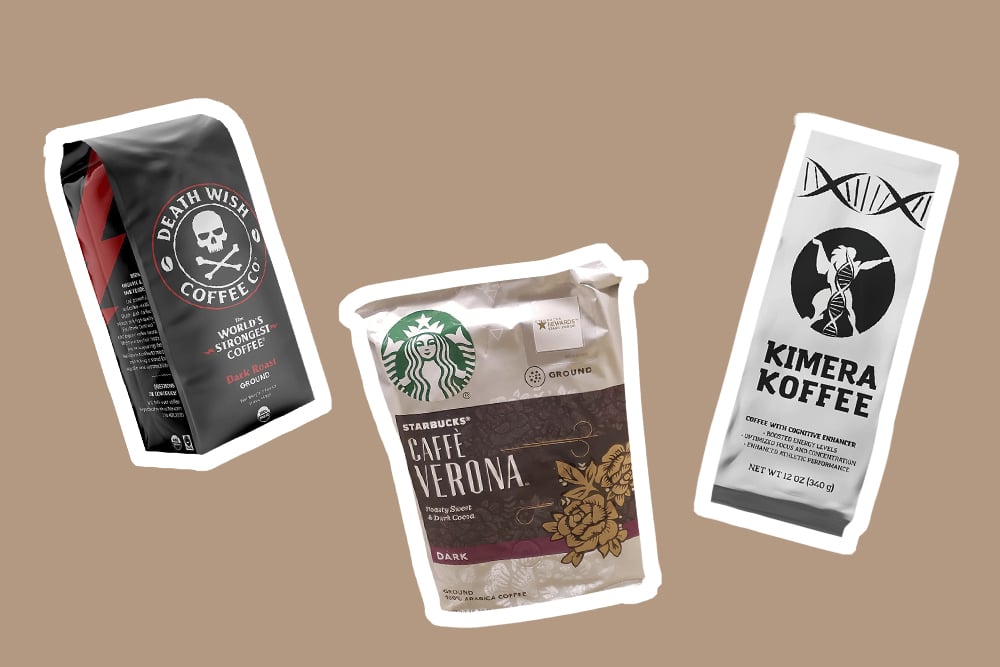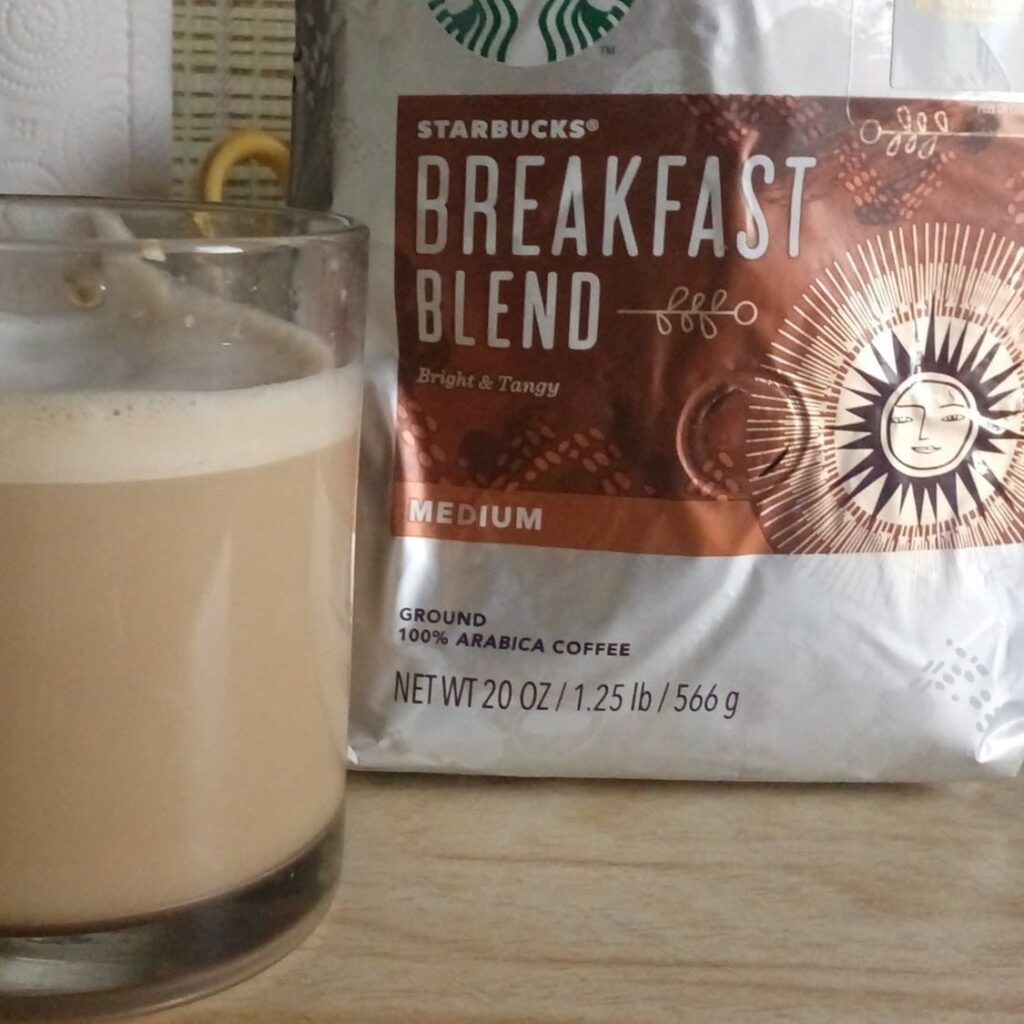

It can be very repulsive most times when the taste of your fresh coffee goes off. This is the cliché you often hear when people have to bear the nauseating consequences of not taking precaution when making their tea.
How many times have you thought about measuring your coffee? Do you even know how to measure coffee so that it gives the taste you want? What is the importance of measuring over not measuring coffee? But is there any reason to measure my coffee? Not many think it is necessary to measure the ratio of their coffee to water. But as you’ll come to see, there’s a need. Getting the proportion of coffee to water for that perfect brew can be quite difficult. There are so many factors that you have to consider if you plan on getting the perfect ratio. In this post, we will consider some of these factors as well as other vital information that can help the brewer to get the correct ratio.
One important reason to measure your coffee is to ensure you have a consistent cup of coffee each time you need to drink tea. Too much of everything is bad; if your blend is also under-measured, it can be dangerous for your health and budget. This is why it is good and advisable too to have the habit of accurate measurement of coffee.
Normally, when coffee undergoes roasting, a lot of changes take place. One of such changes is that the beans decrease in its moisture content. Usually, before roasting takes place, the percentage of the moisture content of green coffee stands at about 11%. However, once roasting takes place, there’s a drastic reduction which will make the moisture content come down to as low as 3 to 5%.
In that sense, you get a sense that having a great coffee is one thing, knowing the amount to be involved in measuring the right stuff that goes into making that great content is another. For instance, if excessive coffee is used while making your choice content, there’s a danger that the brew is extracted below standard.
The end result is that you have sour coffee taste, leaving the sweetness to go. Hence, your coffee tastes somewhat salty. If the amount of coffee content added is low, or of poor quality, the taste of the brew will be watery, flat, thin and weak.
Now that you know why you should not joke with measuring your coffee, let’s get into the real business getting accurate measurement for your coffee while brewing.
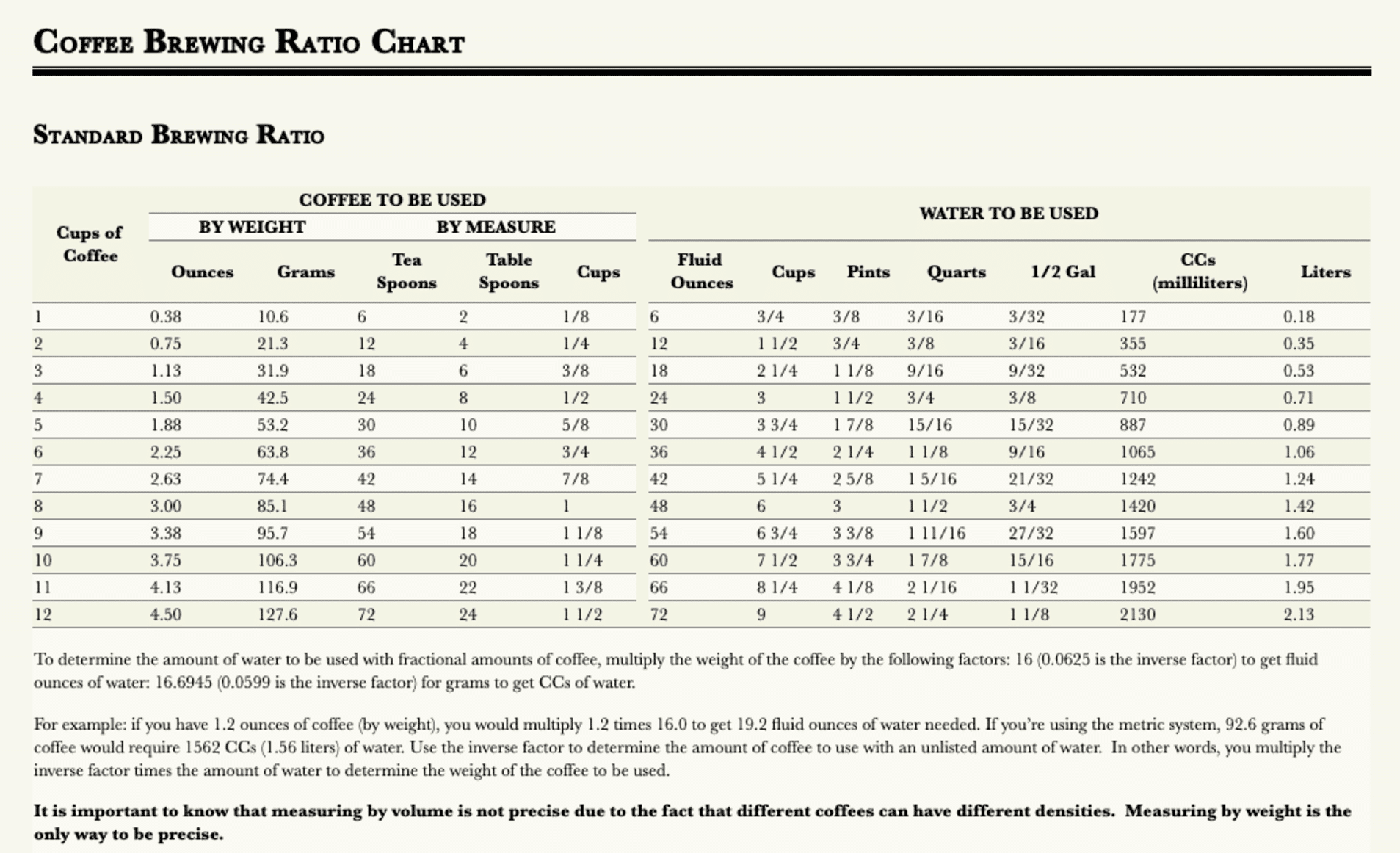
The typical ratio is 2:12, 2:13, 2:14, etc. by 2:12, we mean that 1 part of coffee is added up to 12 parts of liquid (usually water). However, when a scale is used, the interpretation of 2:12 may be something like 10g of ground coffee is brewed using 150g of water. The result will be 150ml of a cup of coffee.
Traditionally, there are various ways you can measure your coffee. It can be through the use of cups, coffee scoops, or tablespoons. Each of these three methods is called the volume-based measurements of coffee.
It has its own merits and demerits. And one obvious reason people try to avoid the use of cups, scoops or tablespoon is that they are inaccurate. Two, they are also ineffective. Pros often use the scale method. It is the most effective and accurate. Meanwhile, a standard coffee scoop should hold two tablespoons of level ground coffee.
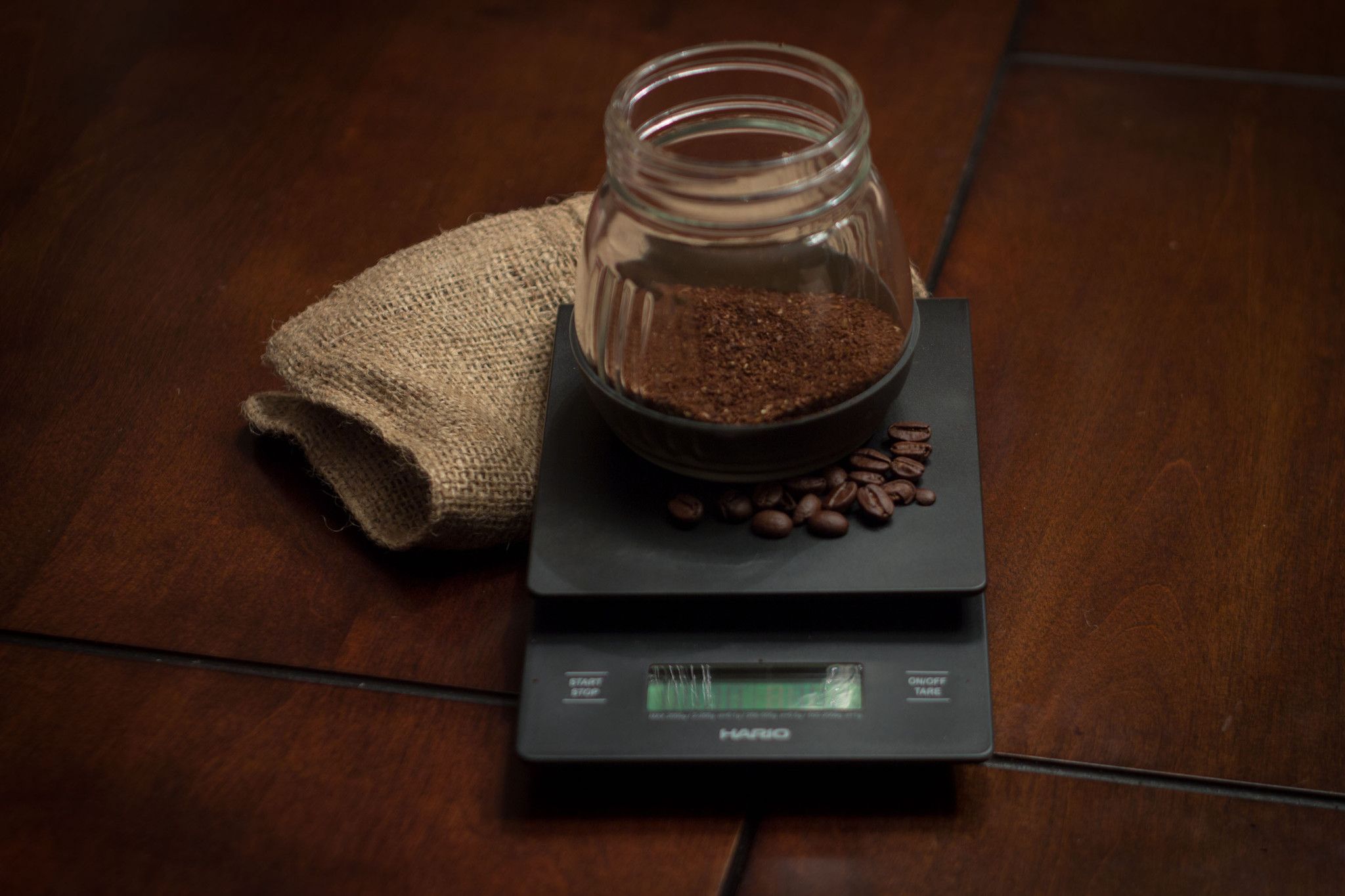
To deploy the scale to measure the coffee means using the golden ratios. In that case, all you need to do is just to weigh the beans and water and allow the scale to give you how much there is.
Two, using scales also has a high impact on the quality and consistency of your coffee. What that means is that until there’s some accuracy in water to coffee ratio, you can’t get a quality and consistent blend of the two substances.
To avoid such measurement error, it is better to use the scales. To use scales to measure, the following steps are required:
Meanwhile, to avoid errors in the accuracy of measurement, measure your coffee before your grind. Typically, the best scales to use to measure coffee come from brands such as Acaia, Hario, Jennings, Brewista, or AWS. As far as specialty and roast experts are concerned, the best scales you can use to measure your coffee is the Acaia; it is preferred over other scales because of its use of nice modern technology. Their scales feature a flow rate meter, Bluetooth connectivity, and brew guides.
Like we’ve hinted, using other methods to measure your coffee portends some risk of inaccuracy. You can still measure your coffee without using the scale. How do you do that? Here’s how:
Without a scale, there’s a need to be more creative to minimize or reduce the level of inefficiency and inaccuracy. Using the no-scale measurement, two tools are essential. One is the tablespoon and the other liquid measuring cup.

There are two types of tablespoons normally use for measuring without scale. One is the level tablespoon, the other the rounded tablespoon. The size of the level of a tablespoon of coffee beans is about 4–7g of coffee.
1g of liquid water is exactly 1ml of liquid water. The two units of measurement are based on each other, which is why it’s a direct translation.
Depending on how you’re going to brew your coffee, the way of measuring coffee can vary. Check out recommendations for the most common coffee makers below.
The French press also called the press pot is a process of brewing the coffee and water together for a few minutes before pressing the plunger in order to gather the coffee grounds that remain at the bottom of the beaker.
Meanwhile, the first thing to know when talking about making coffee using a French press is the number of cups the vessel holds. Ideally, a 4-cup French press makes about two small cups of coffee. Start to grind the coffee beans until the grounds have the size of flakes of salt. This is to make sure that the ground pieces aren’t able to seep through the strainer.
The French press process involves the steps:
To percolate ground coffee beans means to filter it gradually through a porous surface or substance. There are two percolator systems, the gravity and pressure percolator. The percolator system of making measuring coffee to standard is the simplest of all other processes.
Again, it is very durable and allows small amounts of coffee to be brewed. Finally, the process also cleans up debris or residue easily.

Using the auto-drip coffee maker to make coffee is one of the easiest ways to brew a pot of coffee. The process is simple; the result is excellent.
Now that you have your espresso coffee machine, remember to know which type you’re using since not all espresso makers are the same. There is the steam-driven machine which takes longer time to grind; however, it produces fine coffee. There’s also the pump-driven machine which grinds at a lesser time but produces coarse coffee. Regardless of which one you choose, a coffee expresso machine should produce a minimum of 18 and a maximum of 23 ounces of liquid.
Just like measuring the ground coffee, you can either measure the coffee beans with or without a scale. How do you measure the coffee with a digital or kitchen scale? If there’s no scale, how do you go about it?
Usually, a scoop of ground coffee goes with every 6 ounces of liquid. However, when it comes to measuring coffee, you can begin by adding 4 tablespoons of coffee beans to the coffee bean grinder.
The process is simple. After mixing the correct amount of coffee and water, measure out 2 tablespoons for each cup of coffee. You can now add more beans until you have the right amount you want.
Make sure you keep a record of this measure (especially the tablespoons) so that you can replicate the same amount every morning without the need to measure the tablespoons of beans to tablespoons of ground coffee ratio again.

It is important to know how many grams of ground coffee beans make a tablespoon and a teaspoon:
18 grams of coffee=1 (rounded) tablespoon
12 grams coffee= 1 (level) tablespoon
6 grams= 1 (rounded) teaspoon
Here are some tips to start with: the finer the grind of your coffee, the hotter its temperature, the longer the brew time, and the more caffeinated your cup will be. Unlike how it happens to coffee, roasting does not have any impact on the caffeine anatomy of beans.
What that suggests is that the caffeine you consume is not determined by roast but by the amount of coffee you brew. The measure and size of the beans will either increase or decrease the level of caffeine content in your cup of coffee.
40 milligrams of caffeine=1 teaspoon of instant coffee
120milligrams of caffeine=1 teaspoon of instant coffee
The truth is that if you go by the volume measure, that is, using a scoop, what you find out is that a heavier and denser light roast will produce more caffeine. Essentially, if you go by scale measurement, using the weight, more caffeine will be in the dark roast coffees.
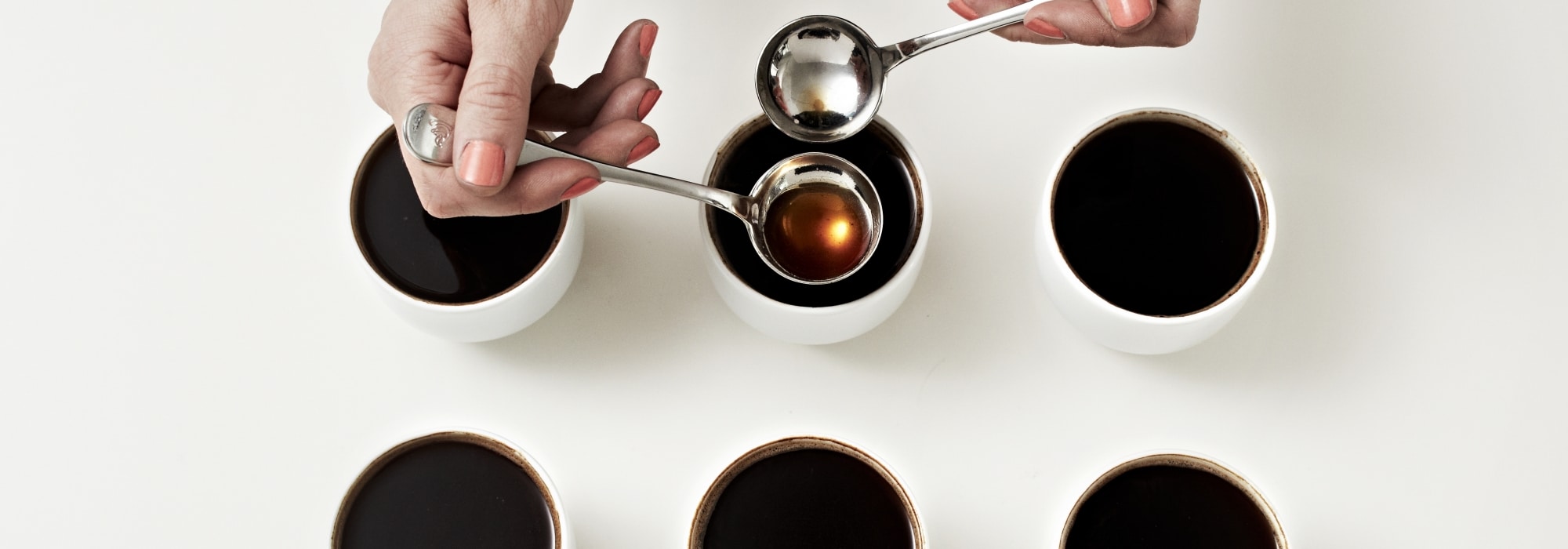
You can use a tablespoon to make a comparison if you’re unsure of the amount of coffee your scoop can hold. In that case, what you do is to measure your coffee by simply pouring it from the measuring spoon into the coffee scoop.
Having an accurate measurement of the content of your coffee is as important as drinking the coffee itself. Never take your coffee without measure. Having said this, can you remember why you should use the scale? Never measure your coffee without using a coffee scale. It saves you time and resources while delivering great value for your body.
How many grams of coffee is present in the regular tablespoon of coffee? Do you want to guess? A tablespoon contains approximately 5 grams of ground coffee. Why do you think such ‘approximate’ measure is not advisable? It’s because it is not accurate. That’s why the use of scale becomes important.
As you sip your warm cup of coffee on a cold winter, you find it pleasing, knowing your coffee was appropriately measured.
We hope that this post will help you with getting the correct ratio for brewing beautiful cups of coffee.
